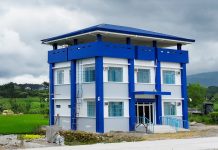TACLOBAN CITY- Six months after supertyphoon Yolanda battered this city and other parts of the Visayas, thousands are still living under tents or temporary shelters.
And needless to say, the issue on shelter remain to be among the biggest concerns of storm victims.
Despite of the “no build zone” policy imposed by the government, there are still families living in tents and makeshifts. It is in these areas where majority of the people of this city were killed due to the storm surges generated by Yolanda.
Derrick Anido, chief of the City Disaster Risk Reduction Management Council, said that rebuilding homes take some time, more so that the city government is confronted with other problems like lack of available lots where these displaced families could be permanently relocated.
Thus, these typhoon survivors living in the coastal areas, especially, those in the no build zones continue to live there.
They had to reconstruct again some shanty houses, made of tarpaulins for their roofs while others put some woods on the side to make them somehow withstand against strong winds or even during inclement weather.
Pedro Cajipe, a father of four children, recalled how the water has submerged all the houses in Costa Brava, San Jose District and how fallen and uprooted trees destroyed most of the houses in their village, one of the hardest-hit barangays in Tacloban.
“Water was all over, submerging all the houses in our village. The storm surge took everything; no food, no place to stay, no savings for us to buy private lots,” Cajipe said.
People still have nowhere to go other than their shanty houses in the no build zone areas, and hundreds of them are facing threat of disease, contaminating drinking water or no water at all to drink.
Victims of the typhoon are reluctant to stay longer in the tent cities because of some protection concerns, particularly on their children.
For Jenny Palahinog, a resident of Old Road Sagkahan, her biggest concern living in tent is the safety of her children.
“I am more concern on my children especially my daughter. I feel not safe staying here in the tent city,” Palahinog, who has four children, said.
According to her, her family sleeps on mattresses placed on top of wood and plastic pallets. Their food, clothing and other belongings were arranged neatly along the wall of the tent.
“We try our best to make it look like home,” she said.
While admitting that the living conditions at the tent cities, which are located within the danger zones, is far from ideal for their children, Cajipe and Palahinog, they have no choice until the government find them a permanent and safe relocation site. (JAZMIN BONIFACIO)



